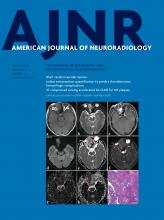Abstract
BACKGROUND AND PURPOSE: Free water in the posterior substantia nigra obtained from a bi-tensor diffusion MR imaging model has been shown to significantly increase over 1- and 4-year periods in patients with early-stage idiopathic Parkinson disease compared with healthy controls, which suggests that posterior substantia nigra free water may be an idiopathic Parkinson disease progression biomarker. Due to the known temporal posterior-to-anterior substantia nigra degeneration in idiopathic Parkinson disease, we assessed longitudinal changes in free water in both the posterior and anterior substantia nigra in patients with later-stage idiopathic Parkinson disease and age-matched healthy controls for comparison.
MATERIALS AND METHODS: Nineteen subjects with idiopathic Parkinson disease and 19 age-matched healthy control subjects were assessed on the same 3T MR imaging scanner at baseline and after approximately 3 years.
RESULTS: Baseline mean idiopathic Parkinson disease duration was 7.1 years. Both anterior and posterior substantia nigra free water showed significant intergroup differences at baseline (P < .001 and P = .014, respectively, idiopathic Parkinson disease versus healthy controls); however, only anterior substantia nigra free water showed significant longitudinal group × time interaction increases (P = .021, idiopathic Parkinson disease versus healthy controls). There were no significant longitudinal group × time interaction differences found for conventional diffusion tensor imaging or free water–corrected DTI assessments in either the anterior or posterior substantia nigra.
CONCLUSIONS: Results from this study provide further evidence supporting substantia nigra free water as a promising disease-progression biomarker in idiopathic Parkinson disease that may help to identify disease-modifying therapies if used in future clinical trials. Our novel finding of longitudinal increases in anterior but not posterior substantia nigra free water is potentially a result of the much longer disease duration of our cohort compared with previously studied cohorts and the known posterior-to-anterior substantia nigra degeneration that occurs over time in idiopathic Parkinson disease.
ABBREVIATIONS:
- aSN
- anterior substantia nigra
- FW
- free water
- HC
- healthy control
- IPD
- idiopathic Parkinson disease
- IPD-NM
- subjects with IPD not receiving any MAOI at baseline
- IPD-R
- subjects with IPD receiving rasagiline at baseline
- MAOI
- monoamine oxidase inhibitor
- MMSE
- Mini-Mental State Examination
- MoCA
- Montreal Cognitive Assessment
- MNI
- Montreal Neurological Institute
- NODDI
- neurite orientation dispersion and density imaging
- pSN
- posterior substantia nigra
- SN
- substantia nigra pars compacta
- © 2018 by American Journal of Neuroradiology
Indicates open access to non-subscribers at www.ajnr.org












